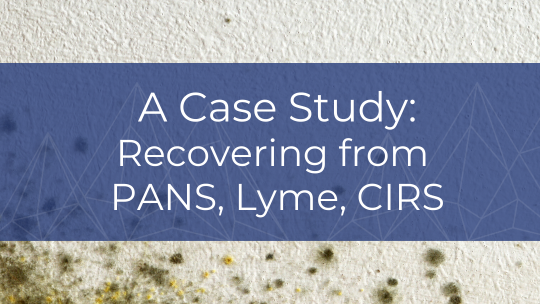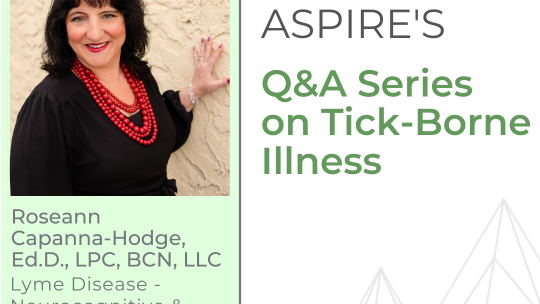
Lyme Disease and Herbal Treatments – Dr. Wells
Antibiotics are the standard of care for Lyme disease treatment. However, it is reported that 10 to 20% of people continue to suffer from Lyme disease after being diagnosed and given a standard...

Antibiotics are the standard of care for Lyme disease treatment. However, it is reported that 10 to 20% of people continue to suffer from Lyme disease after being diagnosed and given a standard...

A Talk with Nathan Who is Recovering from PANS/PANDAS, Lyme & CIRS Gabriella: I had a chat with Dr. Nancy O’Hara, Nathan, and his mom a few years ago and...

Lyme disease, PANS, and the Columbia University Lyme & Tick-borne Research Center. Shannon L. Delaney, MD, Director, Child and Adolescent Evaluation, Lyme & Tick-borne Research Center, is a...

May is Lyme Disease Awareness Month. ASPIRE will post several topics on Lyme Disease and Tick-Borne Illness. Check back here for...

Tick Testing and Disease Transmission Statistics Gabriella: Thank you to Dr. Rich for talking with ASPIRE today about Tick Report and his lab at U Mass. Dr. Rich and I...

Neurocognitive and neuropsychiatric symptoms associated with tick-borne disease. Gabriella: Dr. Roseann, thank you for joining ASPIRE to talk about neurocognitive and neuropsychiatric symptoms...

Every Friday during Lyme Disease Awareness Month, the Vector-Borne Disease Regional Centers of Excellence will give interactive presentations on their work for tickborne diseases such as; tick...

Tick Resources Tick Types, Tick Stages, Tick Diseases Tick Type & Stage Identification Chart List of Tick Borne Diseases Tick Table Tick Life Cycle CDC AKC Lyme Disease Rash Examples...
Anti-lysoganglioside and other anti-neuronal autoantibodies in post-treatment Lyme Disease and Erythema Migrans after repeat infection
Brian A.Fallon, BarbaraStrobino, SeanReim, JulieStoner, Madeleine W.Cunningham Brain, Behavior, & Immunity – Health, Volume 2, February 2020, 100015. https://doi.org/10.1016/j.bbih.2019.100015
This study examines molecular mimicry targeting neural tissue after Borrelia burgdorferi (Bb) infection. Patients with Lyme disease have a greater frequency of specific anti-neuronal autoantibodies and functional neuronal activation compared to community controls without a history of Lyme disease.
“Highlights

Polymicrobial nature of tick-borne diseases 430 of 678 (63%) positive for at least one human pathogen 57% Adults/27% Nymphs – Lyme 14% Adults/15% Nymphs -Babesia 14% Adults/2% Nymphs –...
Melanie Uhde, Alyssa Indart, Brian A Fallon, Gary P Wormser, Adriana R Marques, Suzanne D Vernon, Armin Alaedini, C-Reactive Protein Response in Patients With Post-Treatment Lyme Disease Symptoms Versus Those With Myalgic Encephalomyelitis/Chronic Fatigue Syndrome, Clinical Infectious Diseases, Volume 67, Issue 8, 15 October 2018, Pages 1309–1310, https://doi.org/10.1093/cid/ciy299